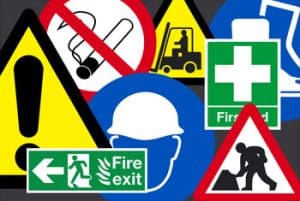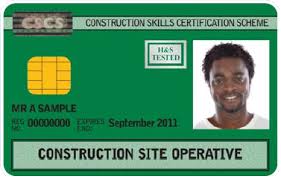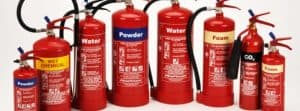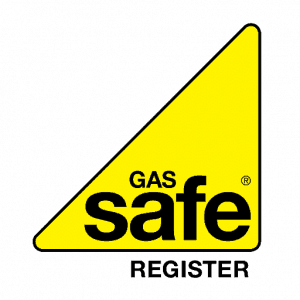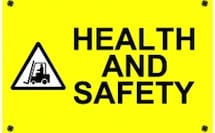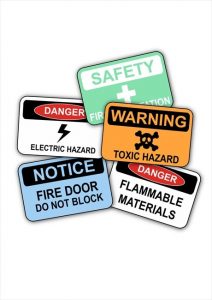Contents
Construction employers and employees alike have specific responsibilities relating to the health and safety of everyone on the job site. Everyone is responsible for ensuring that the working environment is as safe as it can possibly be. It is no secret that the construction industry is one of the most hazardous industries in the United Kingdom. These workers face numerous hazards and risks every day as they perform their job duties. Because of this, it is essential that each and every construction employee take part in different health and safety training so that everyone’s legal obligations is understood. No matter where an individual works in the construction industry, these risks and hazards can be found. However, the injuries associated with the potential risks and hazards of construction work are actually worse than what is found in most other industries. These injuries can be avoided and minimized when simple safety procedures are utilized in order to keep accidents from occurring on the job site.
Employers are required by law to provide employees with a workplace that is safe and healthy. Construction sites have the possibility of being high-risk workplaces, because of this the employees must also recognize that they have a personal responsibility to ensure that they are always carrying out their work safely and following the health and safety guidelines in place.
What the Employer Must Legally Provide Employees
Employers are required to ensure potential risks to the health and safety of employees are kept at a minimum and effectively controlled. Risks and hazards related to construction are typically assessed, controlled and monitored using both method statements and risk assessments. These documents should be accessible at any time from the worksite. Employers must also provide employees with appropriate personal protective equipment needed to safely carry out their job. This typically includes a hard hat, safety footwear, safety gloves, safety glasses, and a high visibility jacket or vest. Each site contains its own rules and safety procedure. Your employer is responsible for inducting you and providing you with this information before you can access the site. The employer must also engage in regular toolbox talks, or talks about a specific safety topic. You are responsible for attending these talks. The employer must check and ensure that you have completed the safety and health training or qualifications required in order for you to safely carry out your job. Sometimes, the employer pays for this training. Finally, the employer is responsible for providing breaks during the work day.
Employee Responsibilities
Employees are responsible for always wearing the personal protective equipment provided by their employer while they are at the worksite. They must co-operate with the employer and partake in any offered health and safety training. They must ensure that they fully understand the rules and procedures surrounding safety on their worksite. Employees must try to assess, eliminate, or reduce risks that they potentially cause to their fellow employees or other members of the public while carrying out their job. Employees must not misuse or alter any safety or health equipment given to them by their employer. Employees are responsible for immediately reporting any injury that they have suffered at work and correctly follow the accident reporting procedures put in place. Employees must inform the employer of any changes that has occurred to their overall health, or if the employee has any existing circumstances that could affect their work. Safety concerns about the individual, the environment, or other workers should be immediately reported to the line manager or the health and safety representative.
Reporting Accidents
When someone is injured on the work site, it is legally required that it be reported. The Reporting of Injuries, Disease, and Dangerous Occurrences, or RIDDOR, became effective in 1995. Put in place by the Health and Safety Executive, or HSE, RIDDOR indicates that any employer, self-employer or person that is in control of any workplace is required to report any and all accidents that are work related. The HSE uses the information from these accident reports in order to figure out where and how risks happen in order to implement future procedures aimed at preventing the accident from reoccurring. The majority of accidents or near misses that happen on a construction site are required by the HSE to be reported so that they can be officially recorded and appropriate actions to prevent recurrence can take place.
Reporting Incidents in the Workplace (RIDDOR)
RIDDOR is a legal requirement found in a 1995 Act containing the safe name. Employers, self-employed workers, and nominated a responsible person(s) are all legally required to report accidents, near misses, or occupational diseases to the HSE.
RIDDOR: What Should Be Reported?
Any injury or death that occurs on the worksite must be reported. Deaths, major injuries, and injuries that last over three days are always reported to the HSE if they occur on site. RIDDOR also requires the following incidents to be reported, involving individuals on the job site but not working:
- Death
- A Injury that requires the individual to be taken from the worksite to the hospital in an ambulance.
RIDDOR: When to Report
The incident severity decides the level of urgency for the report. If it is a major injury or someone dies on site, the incident must be reported immediately. The HSE advises that RIDDOR reports be made on the HSE website using the internet when the incident is urgent. Less serious injuries allow up to ten days before reporting.
RIDDOR: Diseases
It is required that work-related diseases be reported to the HSE. A current list is kept by the HSE of defined work-related diseases. In order for you to be legally required to report to the HSE of a work-related disease, the following two things must occur. If the following things occur, notify the HSE immediately.
- The doctor of the employee notifies the employer that the employee has a disease caused onsite and that is found on the current HSE work related diseases list.
- The employee had to of bee working onsite in order to obtain this disease.
Defining a Near Miss
RIDDOR explains that a dangerous occurrence is a near miss or a dangerous situation. It is a situation that could have resulted in serious harm or injury if conditions had not of played out well. Examples include:
- When the load bearing parts of lifting machinery collapses or fails
- When pipes collapse
- Explosions that take place while carrying out pipe work
- When breathing equipment malfunctions
- The release of dangerous substances
- Fire involving dangerous substances
- Explosions in general
- When materials are projected beyond the site boundaries
Types of Accidents
- Death occurs when someone either dies or becomes fatally injured on the worksite. This type of accident should be immediately reported
- Major injuries include:
- Fractures
- Amputations
- Dislocated Joints
- Vision Loss
- Eye Injuries
- Burns
- Asphyxia that causes loss of consciousness
- Inhaling harmful substances
- Ingesting harmful substances
- Exposure to harmful substances
- Injures from electric shocks
- Burn Injuries
- Hyperthermia (heat induced)
- Any other type of injury or illness that requires an individual to go to the hospital or be resuscitated
- Over 3 Days injuries occur when an employee has suffered an injury on the job that keeps them from attending work or carrying out their regular job duties for a consecutive three or more days. This does not count the day that the accident took place. This type of accident must be reported within ten days of the date of occurrence.
- Work-related diseases occur when an employee or employer has received a written diagnosis from a doctor that they have acquired an occupational disease. This type of incident must be reported within ten days of receiving the diagnosis. Diseases related to the construction industry include:
- Respiratory
- Hand-arm vibration syndrome
- Diseases of the skin
- Weil’s Disease
- Hearing loss caused by excessive exposure to loud noises
- Dangerous occurrences are near-miss incidents that must be reported. This include:
- Explosions
- Collapses
- Exposure or accidental release of dangerous substances
- Breathing apparatus malfunctions
- A dangerous event that takes place at a pipeline or a well
- Failure or malfunction of plant machinery
- Failure or malfunction of load bearing equipment
- A worker becoming trapped
- Equipment impacting overhead powerlines
- Gas incidents occur when an individual suffers an injury or death due to an incident caused by gas. This must be reported immediately. You must also immediately report if you suspect unsafe or hazardous conditions in relations to a gas appliance or fitting.
- Public injuries take place when a member of the public is hurt, put in the hospital, or dies on the construction site or due to tasks carried out on the construction site. The employer is responsible for immediately reporting this.
How and to Whom Do You Report Accidents?
- Employees report accidents to either a site manager or a safety representative.
- Accidents should be recorded in the accident book. You should include details about the accident and any treatment given to the victim.
- The employer will most likely report the accident to the HSE
- You can contact the HSE by phone or over the internet
- It is required that you fill out an accident report and, when required, send this report to the HSE
- Any injury, disease, or near miss must be documented. A copy of this report is required to be kept in a record.
Control of Substances Hazardous to Health: COSHH
United Kingdom’s construction industry utilizes numerous substances that are potentially hazardous to your health. All substances that fall under this category must be handled, controlled, and used in accordance with the guidelines set by COSHH. There are substances that COSHH does not control but have their own regulations. Lead, asbestos, and radioactive substances are examples.
Defining Hazardous Substances
COSHH can only be properly performed when you know what does and does not constitute a “substance hazardous to health”. The HSE defines it as a substance that is known to harm human health if it is ingested, inhaled, or contact takes place between the person and the substance. Hazardous substances can take many forms; examples of which include:
- Fumes
- Vapors
- Dust
- Naturally occurring germs
- Synthetically produced germs
- Chemicals
- Products that contain chemicals
COSHH and Construction
Each of the numerous trades making up United Kingdom’s construction industry uses its own set of materials. When employees undergo training, and from experience gained on the job, they become aware of substances that can harm their health. Following is examples of hazardous substances commonly found within the construction industry:
-
- This includes wood dust, plaster dust, and brick dust
- There are three major ways to control dust
- You can use the appropriate PPE (masks and goggles)
- You can use cutting equipment that is of good quality in order to minimize the production of dust
- You can vacuum up dust efficiently and quickly
- Chemicals and products that contain chemicals
- This includes the solvents and chemicals that are most commonly found in paint or in certain metals.
- Both chemicals and substances that contain chemicals contain their own codes on how to use the products safely
- Any building material that has a hazard symbol on its package
For more CSCS Card Revision check out here.

